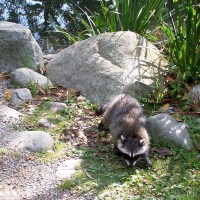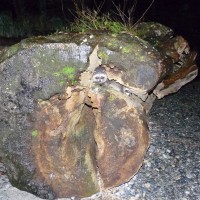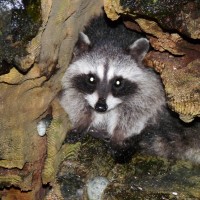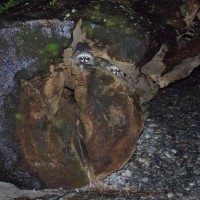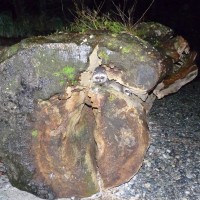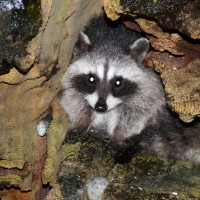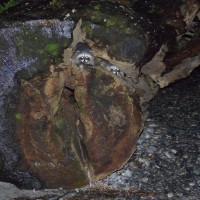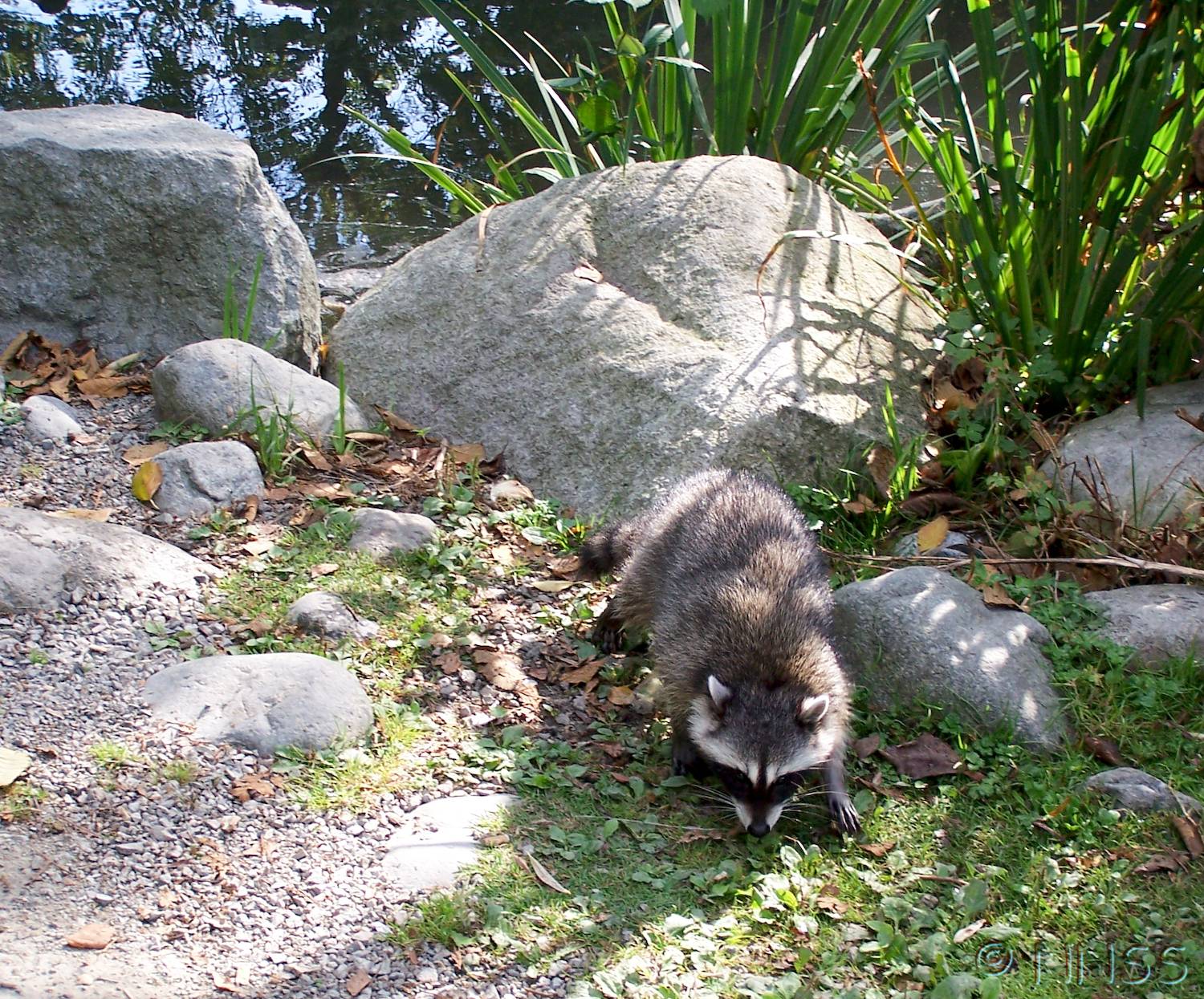
Raccoon - Procyon lotor
Expand and collapse the sections below by clicking on the title or + / - icons.
Short description of Procyon lotor, Raccoon
The northern raccoon is a grey animal, about the size of a large cat, with distinctive dark eye-patches and a thick furry tail with a series of black rings. They like to feed in water or to douse their food in water before eating.
Impact summary: Procyon lotor, Raccoon
No impacts have been reported in GB, but raccoons can be a considerable nuisance to householders, interfere with game management and damage growing and stored grain. They can also carry diseases such as canine distemper and toxoplasmosis.
Habitat summary: Procyon lotor, Raccoon
The natural habitat includes woodland near water, but the species is adaptable and often occurs in urban areas
Overview table
| Environment | Terrestrial |
|---|---|
| Species status | Non-Native |
| Native range | Northern America, Central America |
| Functional type | Omnivore |
| Status in England | Non-Native |
| Status in Scotland | Non-Native |
| Status in Wales | Non-Native |
| Location of first record | ? |
| Date of first record | 1970 |
Origin
Northern raccoons are native to North and Central America, south to Panama and some Caribbean islands. They are commonly kept in captivity in GB.
First Record
Recorded in the wild in GB since the 1970s, for example in Brecon in 1977.
Pathway and Method
Raccoons are attractive animals and popular with zoos. Their inquisitiveness and intelligence, and the surprising dexterity of their forepaws, may help them to escape. Elsewhere in Eurasia, raccoons were kept in fur farms or released for hunting for their fur.
Species Status
Non-native populations are well established in a number of western European countries, including France, the Netherlands, Austria and the Czech Republic, and in the Caucasus and in Japan. The lack of establishment in GB may result simply from chance.
Dispersal Mechanisms
Raccoons are excellent climbers and also swim well.
Reproduction
Raccoons have complex social systems. Females give birth in dens which are mostly in tree holes but may be in a burrow dug by another species or in a roof space.
Known Predators/Herbivores
None known.
Resistant Stages
None.
Habitat Occupied in GB
None known.
The establishment of populations in other western European countries suggests that there are no ecological barriers to establishment in GB.
Environmental Impact
Raccoons may threaten vulnerable bird species and displace native carnivores.
Health and Social Impact
Raccoons raid fruit trees and rubbish bins in urban areas. Some householders encourage the animals by feeding them. They are important vectors of rabies and also carry a roundworm parasite Baylisascaris procyonis that is highly pathogenic in humans, and may even be fatal. Also cause canine distemper and toxoplasmosis.
Economic Impact
The species is often the target of pest control services, at cost to householders. Economic damage may be caused to fruit crops in orchards.
Identification
Wilson, D.E. & Mittelmeier, R.A. (eds) (2009) Handbook of the Mammals of the World. Volume 1: Carnivores. Lynx Edicions, Barcelona.
Biology, ecology, spread, vectors
Zeveloff, S.I. (2002) Raccoons: a natural history. Smithsonian Books, Washington, DC.
Management and impact
Rosatte, R., Sobey, K., Donovan, D., Bruce, L., Allan, M., Silver, A., Bennett, K., Gibson, M., Simpson, H., Davies, C., Wandeler, A. & Muldoon, F. (2006) Behavior, movements, and demographics of rabid raccoons in Ontario, Canada: management implications. Journal of Wildlife Diseases, 42, 589–605.
General
Harris, S. & Yalden, D.W. (2008) Mammals of the British Isles: Handbook. Fourth edition. The Mammal Society, Southampton.
Lever, C. (2009) The Naturalized Animals of Britain and Ireland. New Holland Publishers, London.
https://www.cabi.org/isc/datasheet/67856
https://secure.fera.defra.gov.uk/nonnativespecies/downloadDocument.cfm?id=621
Alert status
Raccoon, Procyon lotor is an Alert Species
Find more information about this alert and the full list of alert species.
Spotted this species?
Distribution map
View the Distribution map for Raccoon, Procyon lotor from NBN Atlas

Native range map
View an interactive native range map for Raccoon, Procyon lotor
Risk assessment
Risk assessment for Procyon lotor. See a full list of non-native species Risk assessments.
Legislation
Procyon lotor is a Species of Special concern. Read more about Non-native species legislation.
Horizon scanning
A horizon scanning exercise conducted in 2019 identified this species as one of the top 30 non-native species most likely to become invasive in Britain over the next ten years.

